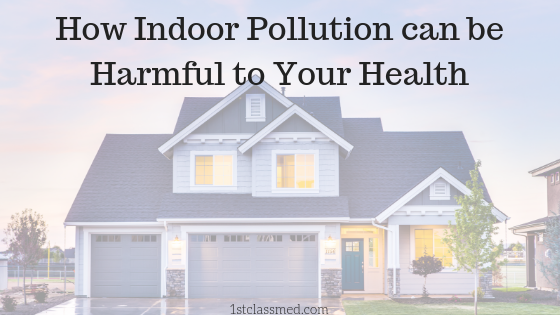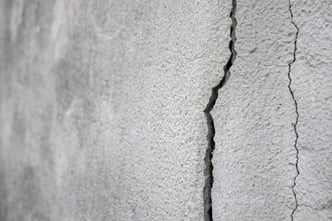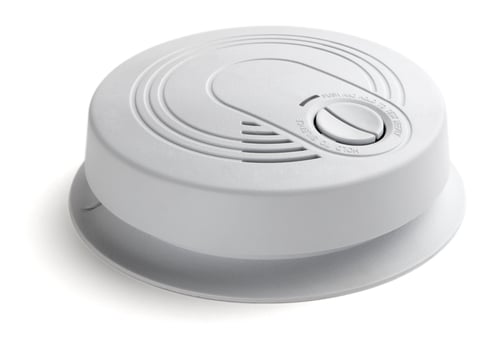
We often think that indoor air is safer than the outside air, but the truth is that indoor air can be even more dangerous than indoor air.
According to the Environmental Protection Agency (EPA) the air inside of our homes may be more unsafe that the outdoor air.
Indoor air pollution can come from a multitude of things, such as air fresheners or nearby construction.
Tobacco smoke and wood-burning fireplaces and stoves can also cause indoor air pollution.
Older homes are more likely to let outdoor air (and pollution) seep into the home, compared to newer homes that are more energy-efficient.
Sources of Pollution
There are many causes of pollution in your home, such as mold, mildew, dust mites, cockroaches, chemicals and secondhand smoke.
Mold and mildew can both cause air pollution in your home and are commonly found in the bathroom or any room that has excess moisture.
Dust mites and cockroaches can also cause indoor pollution, as their saliva, feces and skin shedding are left behind.
Chemicals such as carbon monoxide, nitrogen dioxide, sulfur dioxide, radon, formaldehyde, and those in cleaning products can also be found inside homes and they can be dangerous to those inside.
Asbestos can also be found in homes that are slightly older and may have used older building materials.
Carbon monoxide can be released from fuel-burning stoves, fireplaces, heaters and other appliances, so it doesn’t always come from the outside.
Carbon monoxide (CO) is difficult to notice as it is colorless and odorless, making it unable to be detected by human senses.
If too much CO enters the body, it can block oxygen in the body, affect coordination, worsen heart conditions, cause extreme tiredness, headaches, confusion, nausea and dizziness.
Death can occur if it is a very high level of carbon monoxide, so it is important to have a carbon monoxide detector in your home.
Nitrogen dioxide is also an odorless and colorless gas, but it is known to irritate the mucous membranes in the eyes, nose and throat.
Nitrogen dioxide occurs from natural gas and kerosene combustion, meaning you may not always know you are being exposed.
Over time, if you are exposed to nitrogen dioxide it can begin to damage the lungs and can cause you to develop a lung disease such as chronic bronchitis.
It can also cause severe irritation and worsen symptoms in those with asthma, COPD and respiratory infections.
Sulfur dioxide can occur when kerosene is burnt in a fireplace or space heater.
This gas is colorless but has a very strong odor that is suffocating, as the gas is heavier than air.
It can be very irritating to the eyes and respiratory system if inhaled.
Radon is an odorless and colorless gas that comes from uranium in the ground, which can seep into your home and can get into streams and rivers (which can affect drinking water).
The gas can get into the home through cracks in foundation, walls, drains and any other opening in the home.
Radon exposure is the second leading cause of lung cancer behind smoking, but those who do smoke and have radon exposure are at a higher risk of death from lung cancer.
Formaldehyde, which is found in adhesive used for furniture, carpets and other home products, has a strong scent that can cause coughing, irritation to the eyes, nose and throat, as well as produces rashes, headaches and dizziness.
The scent is normally strong enough to notice and can be dispersed by opening windows to air out the home.
Cleaning products can contain harsh chemicals that can cause dizziness, nausea, allergic reaction, eye, skin and lung irritation, and even cancer.
This can be a dangerous buildup of pollution in your home, so it is important to make sure your home has a good ventilation system.
Pesticides used in the home can still produce dangerous pollution, even if the bottle claims it is safe for indoor use.
Lead is also common in older homes, as many old paints had lead it in, so if your home is older look into getting the lead paint removed professionally and repainted with lead-free paint.
Asbestos can also be found in homes, typically older homes, in insulation, tile, and cement.
If asbestos is undisturbed it is not harmful, but if it becomes airborne (i.e. from removing old tile or taking out drywall) it can get breathed in, which can cause scarring in the lungs and possibly lung cancer.
Like many chemicals, asbestos does not have a smell or color, so it is unlikely that you will notice it in your home unless it is tested for.
Smoking in the home can cause pollution, as cigarette smoke has trace amounts of thousands of chemicals, 200 poisons and at least 40 carcinogens.
Poisons such as formaldehyde and carbon monoxide have both been found in cigarette smoke, which is why it is so important to smoke outdoors or even quit smoking.
These pollutants can be harmful to your health and can get stuck indoors and effect you and those who may live with you.
Air Concerns Indoors
As many of the bad things that can be found in your home do not have a smell or color, you may not notice that there is an issue, so it is important to know when you should check air flow and air quality.
Common symptoms such as:
If the air feels stuffy, and opening windows refreshes your home, there may be an issue with the vents in your home
If the air stands still, there is a possibility that a register is not producing enough air in the home, so no air is moving around
- Dirty central heating and air conditioning
If the heating and air conditioning dirties, the register filters will often get dirty quickly and doesn’t often produce a lot of air
If you have a chimney, you know the importance of getting it cleaned often, not only does it help keep air moving throughout your home, it can remove smoke and other pollutants in the home as well
If there is a lot of humidity in your home then your vent system may not be removing enough air, as the humidity from a shower or bath should be gone relatively quickly. The humidity can be a haven for mold and mildew to grow
If there is mold and mildew, then the vents are not removing enough air and letting enough moisture sit around for it to grow
- New health symptoms after remodel, new furniture and/or cleaning products
If after a renovation (or new furniture or cleaning) you notice symptoms that are abnormal, there may be pollutants that were released
- Feeling better outside (i.e. no headache outside, but headaches at home)
This is a very large giveaway, as many times you should not have a headache in your own home, but it can mean that too many pollutants are hanging around instead of getting pulled with the air out of the home
If cleaning is too much for you, look into hiring a local cleaning company to help clean for you.
It is also important to have smoke detectors on every level of your home (basements included) that can also detect carbon monoxide.
Charles Blum, Operations Manager of Cool Today (FL), recommends a CO monitor as it tracks your CO levels continuously and records them.
Frequent low level exposure to CO can be harmful to your health too.
It is important to know if there could be a pollutant (or multiple) in your home, so getting carbon monoxide detectors (often built into smoke detectors), and even a radon detection system can help be proactive about possible pollutants.
Many pollutants (specifically chemicals) are hard to detect, as they have no smell or color.
Some states offer radon and carbon monoxide testers, but you can often find some at your local hardware store.






